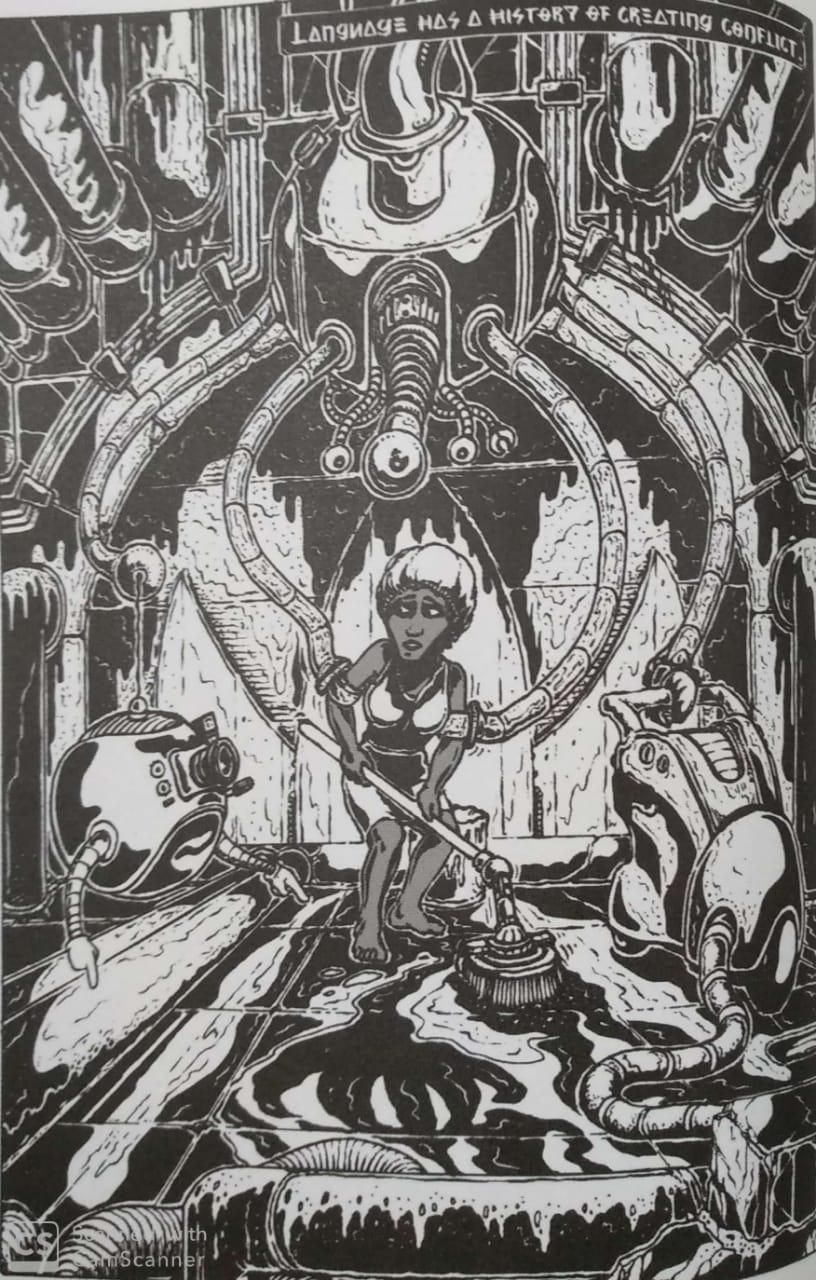The Conceptual Use Of Gaze In ‘The Snake And The Lotus’ .
Jun 05, 2019 • 3 views
The concept of gaze in Indian graphic narrative:
For a greater parter of century, the Indian idea of seeing has been linked with something divine. Wether it be the conception of darshan or nazaar, these have always been linked with seeing the divine and God-like. The Indian idea of gaze has been associated with the auspicious. The emergence of graphic narratives in the post-millennial moment in India invites us to look at the ideas of Indianness in fairly inauspicious ways. These old ways of seeing have been challenged as now with the divine gaze we have the male gaze, the white male gaze, a fairly western political concept, however, nevertheless persistent in our ideas of Indianness. This idea of gaze plays an important role in Appupen’s ‘The Snake and the Lotus’ as these distinct gazes are used to define and express emotions and authority in his comparatively wordless narrative.
The post-millennial India:
This post-millennial time in India is marked by the growth in Indian commercial fiction and Indian genre fiction. We see the mass consumption of novels which have only been successful in the Indiancommercial market, not critically acclaimed but commercially successful. This growth in the commercial market marks the need for the Indian readership to identify Indian tropes in their novels.These tropes, however, stereotypical, indicate a certain localised setting in their use of language, style, semantics, and go to the extent of incorporating Hindi as well as the Indian-English through techniques of code-switching. They also challenge what post-millennial modernity means in India. Graphic narrative offers these very challenging ideas of Indianness through both textual as well as visual representations. These inauspicious representations of Indianness invites us to look closely and examine the previously overlooked issues in this art form such as domestic violence in ‘Drawing the Line’, the issues of untouchability in ‘Bhimayana’, celebrity culture in ‘The legends of Halahala’.

Appupen’s work while being political depicts the very essence of the crisis we are living in. In ‘The Snake and the Lotus’, which is set in the lands of Halahala, a previously established mythical land for the duration of Appupen’s narratives, it accommodates the features of fantasy, dystopian as well as mythical fiction. Appupen’s work contains minimal text, a sort of wordless narrative, and uses distinct expressions to portray emotions. The story begins with a graveyard like setting, which is shown completely devoid of life. This is then followed immediately by the second panel, where a similar setting is observed, however, filled with humans and ruins. Appupen establishes the kind of setting he wants to put forth in the book in the first three pages of the book which contains no text.
